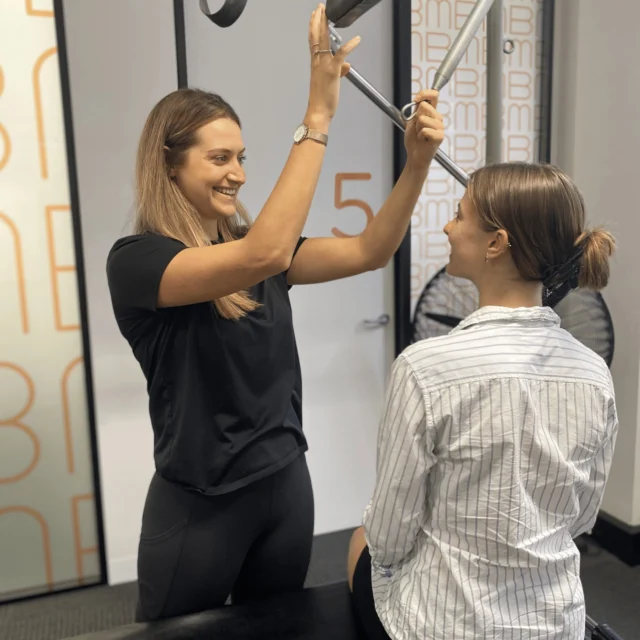 Let’s first consider a normal shoulder. It is an amazingly mobile joint that allows us to reach high above our head but also allows us to reach right up behind our back. This large and varied range of motion is enabled by a ball and socket joint formed between the top of your arm bone (ball) and your shoulder blade (socket). It could be likened to a golf ball on a tee as it has a large ball centred on a very small socket. Unfortunately, this design sacrifices stability to gain such a large range of motion.
Let’s first consider a normal shoulder. It is an amazingly mobile joint that allows us to reach high above our head but also allows us to reach right up behind our back. This large and varied range of motion is enabled by a ball and socket joint formed between the top of your arm bone (ball) and your shoulder blade (socket). It could be likened to a golf ball on a tee as it has a large ball centred on a very small socket. Unfortunately, this design sacrifices stability to gain such a large range of motion.
Luckily our shoulder has more than just its bony design providing support. There are also both static and dynamic stabilising structures.
Static structures:
The socket is deepened by a rim of fibrocartilaginous tissue called the labrum and it is stabilised at the end of range by ligaments (tissue that holds bone to bone) and a capsule.
Dynamic structures:
The shoulder is surrounded by your rotator cuff (combination of four muscles). These and the surrounding shoulder muscles work together to compress the ball into the socket as you move. This alongside pressure within the shoulder capsule create almost like a suction mechanism holding both surfaces together.
This all works very well to stabilise in a normal shoulder! Unfortunately for about two percent of the population they will experience shoulder instability. This means that there is unwanted movement, in one, two or multiple directions, of the ball within the socket affecting function and comfort. The most common of these is anterior instability, meaning the ball shifts forward in the socket.
What can cause shoulder instability?
- Trauma such as a fall onto an outstretched arm.
- Microtrauma from repetitive such as throwing, swimming or serving in tennis.
- Anatomic changes such as flattened or narrow socket.
- Poor muscle recruitment.
- Generally loose ligaments (hypermobility) or connective tissue disorders such as Marfan syndrome or Ehlers Danlos syndrome.
Symptoms of instability can include:
- Avoiding certain shoulder positions due to pain or apprehension.
- A feeling of loose, slipping or giving out around the shoulder
- Dead, heavy or tingling feeling in arm.
- Shoulder pain in either back, front or the side of the joint.
- Recurrent dislocation or subluxation.
How can physiotherapy help?
Physiotherapy can help to improve your pain levels, strength and dynamic control of the shoulder. It is important to have adequate rotator cuff muscle strength and control to centre the ball in the socket. The muscles that control the shoulder blade (socket) are also important as they provide a stable base for your shoulder to work off.
Particularly if there has been a traumatic onset of symptoms or if you have experienced multiple dislocations, further investigation to may be required. Your physiotherapist can assess your shoulder and advise you as to whether this may be needed.
If you are experiencing symptoms of shoulder instability, come and see the experienced team at Bend + Mend in Sydney’s CBD for a full assessment.





